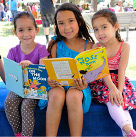When it comes to caring for a child, there are many times throughout the day that a child will need to be fed, changed, settled down for naps, and cleaned up. These caregiving routines are built-in opportunities for connection between a child and a caregiver. Through these natural everyday occurrences, caregivers can build a nurturing relationship founded in trust and security.
When establishing a caregiving routine, parents and child care providers should develop focused and responsive practices for things like commuting to and from the care or early education setting, diapering or toileting, feeding and meals, napping, and transitions. We have several tips for making this routine seamless and simple.
Tips for Creating a Caregiver Routine
- Be consistent: A routine is an expected, repeatable sequence of events that provide structure and predictability. Children thrive when they feel like they have consistency.
- Meet all needs: The clearest way to meet the needs of the children is to acknowledge that each child is an individual with their own needs. The Program for Infant Toddler Care (PITC) has six policies that emphasize the need for respectful care for the benefit of both children and caretakers. The policies highlight the individual needs of families and children, all of whom come from different cultures and communities and have varied abilities, preferences, and ways in which they learn. When the basic needs are responded to promptly and respectfully, children feel safe which gives them the freedom to learn.
- Allow time for play: Infant schedules can feel a bit daunting; each need seems so immediate. That’s why it is important to build in time for play during the task in addition to play between tasks. For example, take a few moments during a diaper change to play peek a boo, sing a song during transitions, read, or tell a story before naps. Get creative in your opportunities for connection and help each child feel cared for to help build their skills and autonomy.
When children have a predictable routine, their wholistic needs are met, and play is a key factor, children feel safe and are more adaptable. By developing a routine that fosters these different qualities, parents and caregivers can better connect with their children and helps take the fuss out of the daily tasks.
To learn more practices for child care settings read:
https://www.qualitystartsbc.org/working-with-children-who-have-challenging-behaviors/
https://www.qualitystartsbc.org/infant-toddler-learning-foundations/


